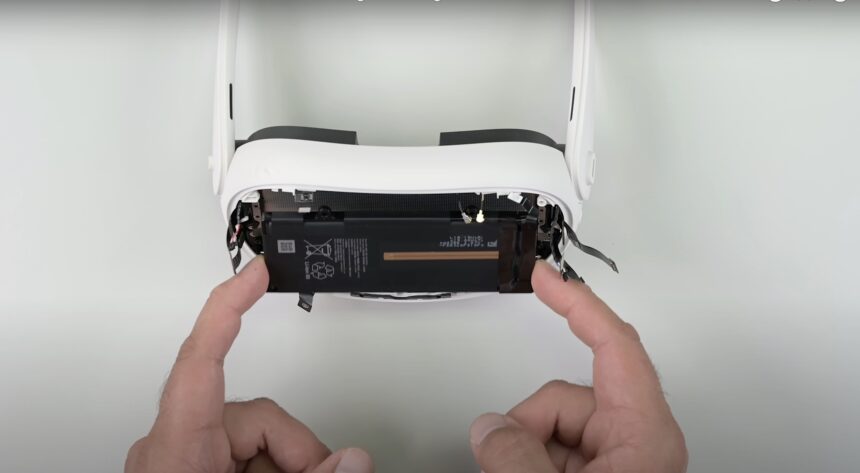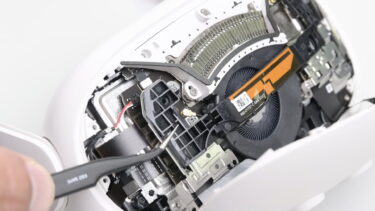The website iFixit took apart the Meta Quest 3 and found a large battery hidden deep inside the headset.
The teardown follows that of Meta Quest 2 and Meta Quest Pro, and not much has improved in terms of repairability. The Meta Quest 3 is also difficult to dismantle.
When removing the rubberized layer that separates the inner side of the headset from the electronics, a piece of plastic broke off, and to access the battery from the other side, the teardown technician had to remove several key components and about 50 screws.
The battery is hidden under the active fan, the motherboard and a metal plate. One of the many reasons Meta may have chosen this design is comfort. The battery is usually the heaviest component in a standalone headset. The closer it is to your face, the less weight you feel. The Quest 2 has a similar design, while the Quest Pro has the battery built into the back of the headband.
A more powerful battery than Quest 2
The battery is a lithium polymer battery with 19.44 Wh. The Quest Pro’s battery had 20.58 Wh, while the Quest 2’s had 14 Wh.
The Quest 3’s battery lasts about as long as the Quest 2’s. The Quest 3’s higher power consumption is likely due to factors such as the powerful chipset, mixed reality sensor architecture, and pancake lenses. The latter absorb a lot more light than the fresnel lenses on the Quest 2, so the LCD panels have to shine a lot brighter to achieve the same brightness.

The teardown tech suspects that the Quest 3’s more powerful battery contributes to the Quest 3’s heavier weight compared to the larger Quest 2s.
Meta Quest 3: Repair is difficult
Since Meta still does not provide repair manual and OEM spare parts and did not consider repairability in the design, iFixit gives the Meta Quest 3 a rating of only 4 out of 10 points.
“The design is a significant improvement over the Quest Pro when it comes to repairability, especially where the controller is concerned, though it clearly has its design philosophy firmly rooted in the Quest 2’s construction, which means it’s complicated to dismantle and the battery is far more difficult to reach than it should be,” Mokhtari says in his conclusion.
Source: Mixed News





